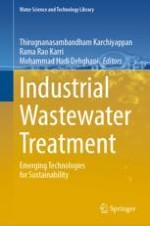This book provides an overview of recent advances in technologies for water treatment processes, such as green technology, nano-adsorbents, photocatalysts, advanced oxidation, membranes separation and sustainable technologies. Advances in membrane technology and fabrication process is presented in detail. Latest approaches like microbial treatment, electro chemical and solar energy-based treatment techniques were presented. Also, the use of sustainable and energy efficient approaches were discussed.·
The book presents the negative impact of inorganic and organic pollutants on the natural environment and human health. It describes and discussing the advanced membrane technologies, novel green adsorbents, microbial treatment techniques, electro chemical and solar based removal techniques It also compares the most effective methods of removing toxic contaminants from water solutions with the use of sustainable and energy efficient approaches It also presents the life cycle assessment of emerging technologies in industrial wastewater treatment and desalination as well as presents the benchmarking of energy efficiency during treatment process
